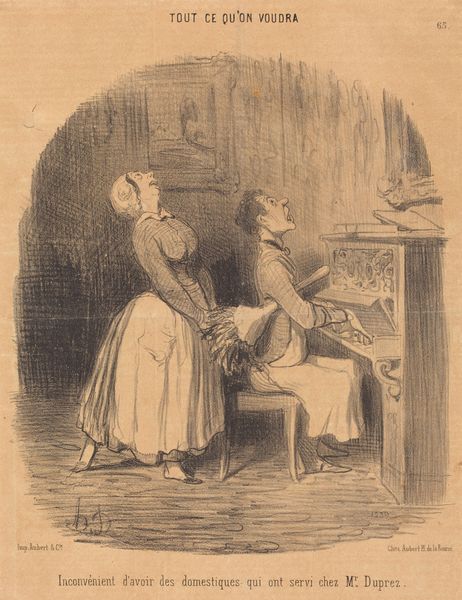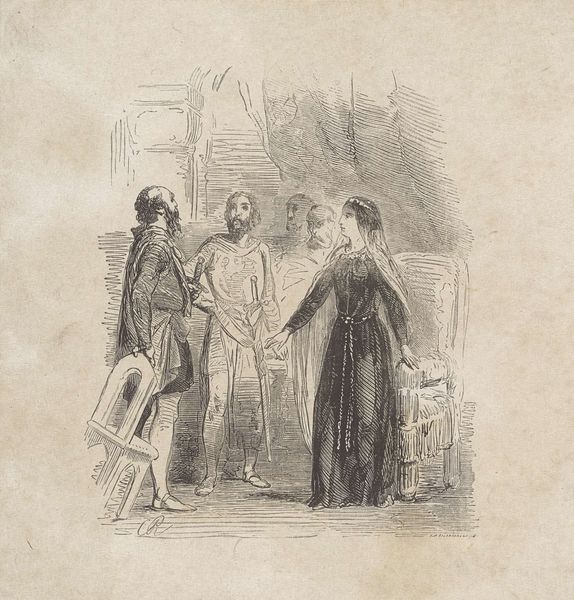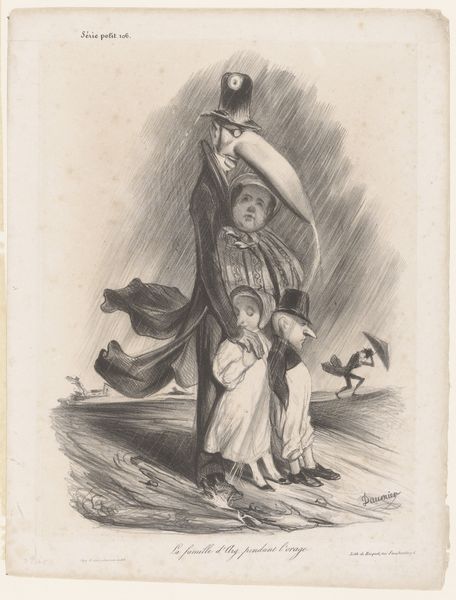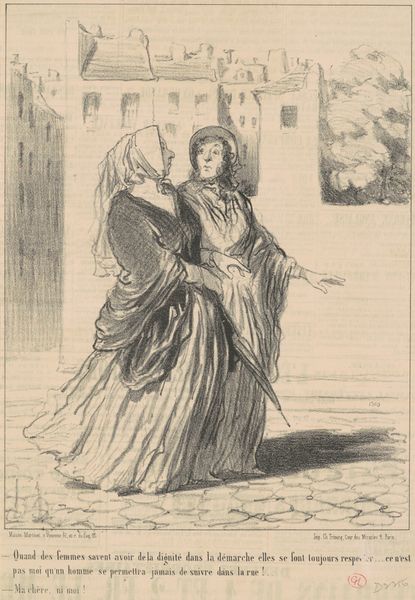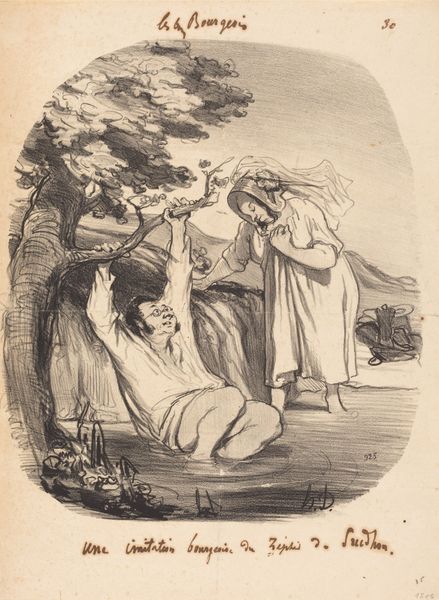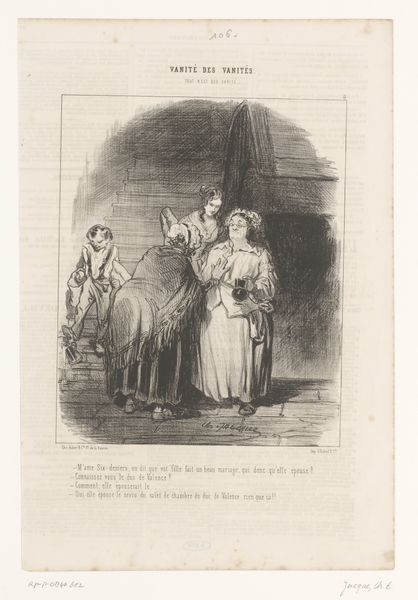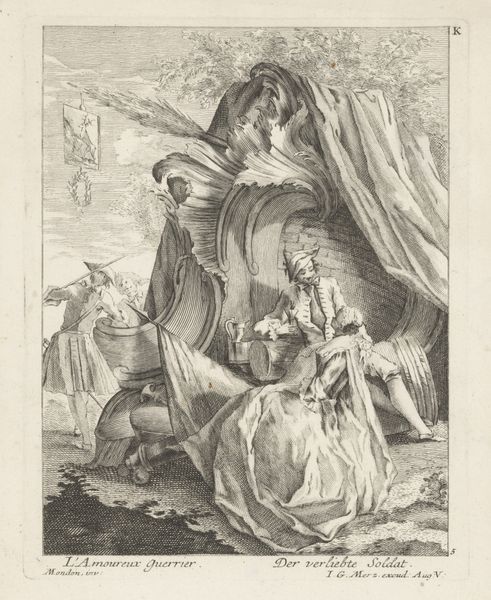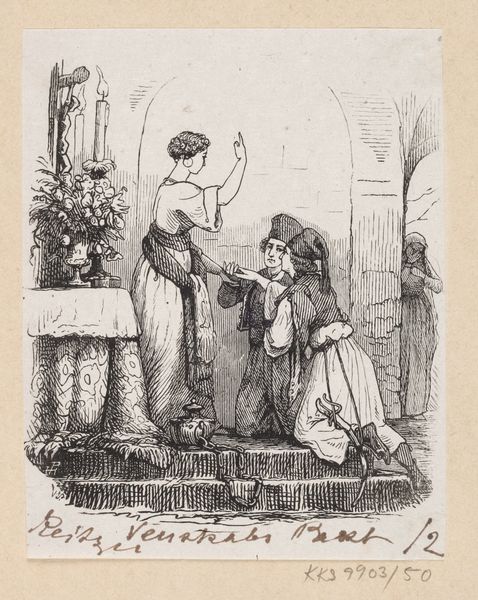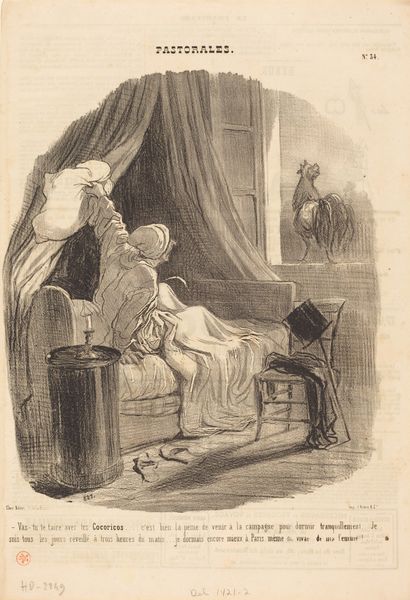
Depuis que Zémire sait qu'elle va me couter quinze francs ... c. 19th century
0:00
0:00
drawing, lithograph, print, ink
#
drawing
#
lithograph
# print
#
caricature
#
ink
#
romanticism
#
genre-painting
Copyright: National Gallery of Art: CC0 1.0
Curator: Here we have a lithograph by Honoré Daumier, created in the 19th century. The piece is titled, “Depuis que Zémire sait qu’elle va me couter quinze francs...” Editor: It's an intimate, almost humorous scene. The rapid lines suggest a moment caught in motion, not posed. The figures are swathed in fabric; the image teeters between warmth and perhaps... satire? Curator: Indeed. Daumier was known for his caricatures, holding a mirror to the foibles of Parisian society. It’s likely the fifteen francs Zémire is set to cost alludes to a tax or regulation affecting pet ownership, typical for the period. This image participates in a visual commentary on the burden such things put on ordinary lives. Editor: Right, and let's consider the material – lithography allows for that detailed, almost sketch-like quality. It suggests an immediacy, a mass-producible observation readily consumed. The work becomes part of the very socio-economic system it seems to critique. Think about the access it granted people at that time. Curator: A very important point. Also observe the careful delineation of the central figures against the sketched backdrop of implied social space, as those lines suggest Daumier focused the main tension between care and the economic anxieties around caring for vulnerable creatures. Editor: I'm also struck by the prominence of cloth here. The draped figures of both women create a swaddle of softness; they appear equally fragile as their dogs, almost like they were made of the same materials. Is Daumier questioning societal definitions of "preciousness?" Curator: It would appear so. What starts as caricature morphs into a layered portrait of personhood. In addition, it's a commentary on Romanticism's effect and expression upon the rising middle classes of the 19th century. Editor: Overall, the rapid process that goes into this work mimics the social currents it dissects. From initial intention, to mass consumption, and all its implied labor and commodification along the way... food for thought, no? Curator: Definitely. It reminds us that art doesn't just reflect history. It’s produced in the thick of its demands, debates, and daily negotiations.
Comments
No comments
Be the first to comment and join the conversation on the ultimate creative platform.


